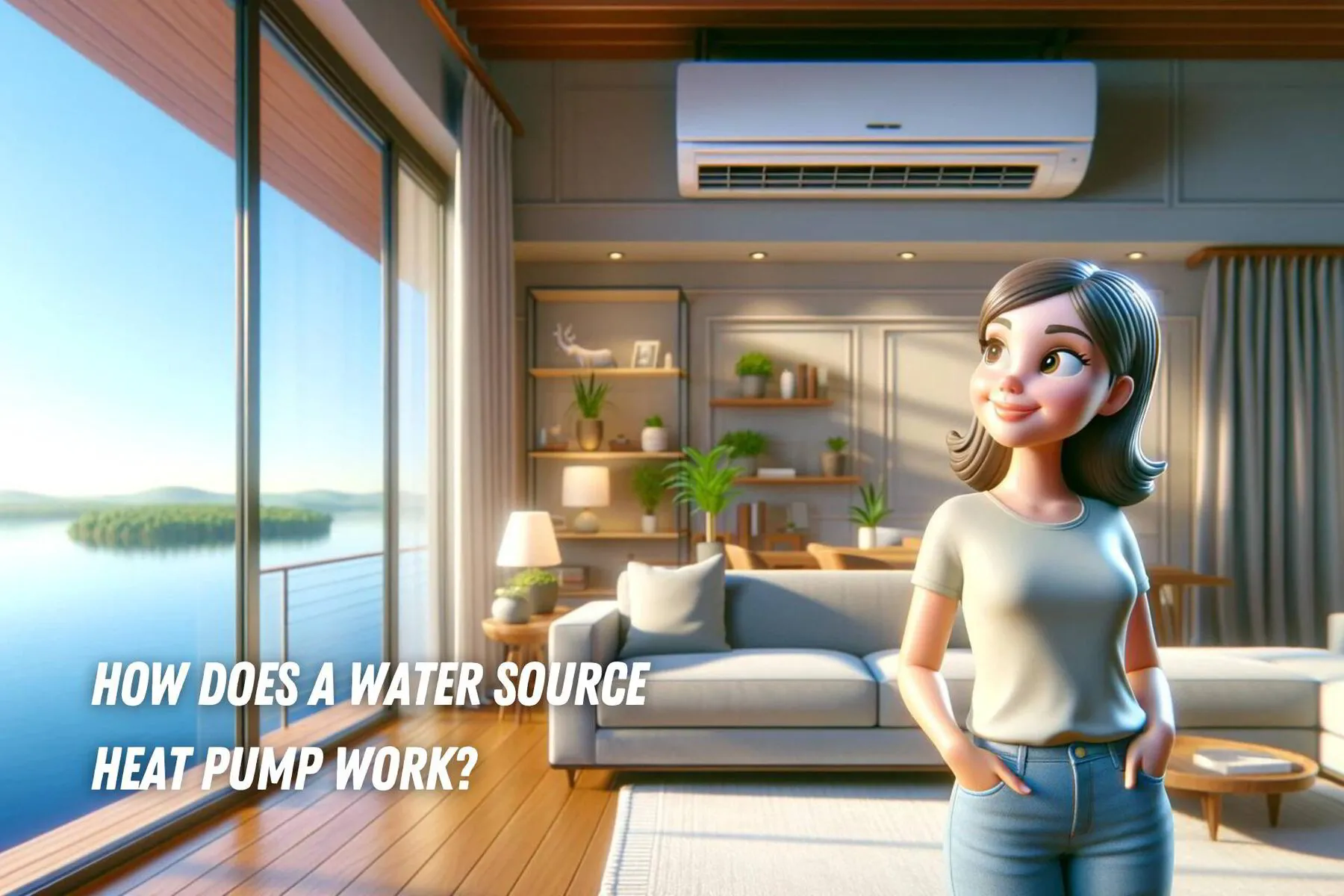What Is A Water Source Heat Pump?
Water source heat pumps (WSHPs) are increasingly popular in residential settings due to their efficient heating and cooling capabilities. Utilizing water as a heat exchange medium, WSHPs offer a more stable and efficient temperature control method than traditional air systems.
This is particularly advantageous in regions with fluctuating air temperatures. By leveraging the consistent temperatures of water sources, a water source heat pump provides reliable performance, ensuring uniform indoor climates in homes.
Their efficiency and effectiveness in various weather conditions align with sustainable building practices, making them an appealing choice for environmentally conscious homeowners seeking modern heating and cooling solutions.
How Water Source Heat Pumps Work
Water source heat pumps operate on a fundamental principle similar to all heat pumps: they transfer heat rather than generate it directly, making them highly efficient for heating and cooling.
Unlike air-source heat pumps, which extract or dissipate heat through the air, WSHPs use water as their heat transfer medium. This system involves a water loop, often connected to a natural source like a lake or artificially maintained, such as a cooling tower, which helps stabilize temperature control regardless of external weather conditions.
A closed-loop system utilizing sealed pipes filled with anti-freeze fluid gathers heat energy from water and circulates it back to the heat pump, offering advantages in various geological conditions by maintaining consistent temperature control.
The core components of a WSHP include:
- Compressor: Moves the refrigerant throughout the system and increases its pressure, preparing it for heat exchange.
- 4-Way Reversing Valve: This valve changes the flow direction of the refrigerant, allowing the system to switch between heating and cooling modes. In cooling mode, it facilitates heat extraction from the indoor air; in heating mode, it reverses the process of warming the indoor air.
- Refrigerant Heat Exchanger: Transfers heat between the refrigerant and the water in the loop.
- Expansion Device: Regulates the refrigerant flow into the evaporator, helping control the amount of cooling produced.
- Coil: This is where the heat exchange process completes as air is blown over the coil, heating or cooling it before it enters the building.
- Fan: Circulates air over the coil to facilitate the heat exchange process.
The refrigeration cycle is a critical process in WSHPs, facilitating efficient heat transfer in both heating and cooling modes through the system or unit's components.
Air-source heat pumps rely on fluctuating outdoor air temperatures and can become inefficient in extremely cold climates. In contrast, the water loop in a WSHP provides a more consistent and reliable source of heat exchange, making it effective even in regions with significant temperature variations. This reliability and efficiency in diverse conditions underscore the growing preference for WSHPs in commercial applications.
Benefits of Using a Water Source Heat Pump
Water source heat pumps (WSHPs) efficiently manage heating and cooling in commercial buildings by using water for energy transfer. Effective in winter and summer, they adjust to varying demands, providing zone-specific temperature control for enhanced comfort and optimized energy use.
Their design supports efficient heat rejection, particularly during cooling operations, making WSHPs ideal for eco-conscious settings.
Installation Considerations
Choosing between a closed-loop and an open-loop system is crucial when installing a water source heat pump. Closed-loop systems, often utilized in bodies of water like lakes or ponds, circulate refrigerant or water in a sealed circuit, minimizing environmental impacts and the risk of freezing.
In contrast, open-loop systems draw heat directly from water sources and, while potentially more efficient, require careful management of water quality and freezing risks to ensure optimal performance and durability.
Water source heat pumps also feature a modular design that eases installation and maintenance. They allow seamless integration into existing buildings and adaptable configurations to suit various layouts, thus reducing installation complexities and supporting efficient heating and cooling solutions.
Conclusion
Water source heat pumps stand out for their efficiency and flexibility in commercial settings. They provide stable and energy-efficient heating and cooling year-round. These systems use water as a heat exchange medium. They offer modular designs that simplify installation and maintenance and can be adapted to various building zones for precise air temperature control.
At DIY Home Comfort, our expertise in modern HVAC solutions guides you through the nuances of advanced heating and cooling technologies. For more detailed insights and practical advice on heat pumps and their applications, visit our comprehensive collection of articles. Explore our resources to enhance your building's efficiency and comfort.
Scott Harding
Scott is the main author of DIY Home Comfort. He's also an experienced HVAC technician that enjoys home renovation and spending time with his family. You can find out more about him here.


